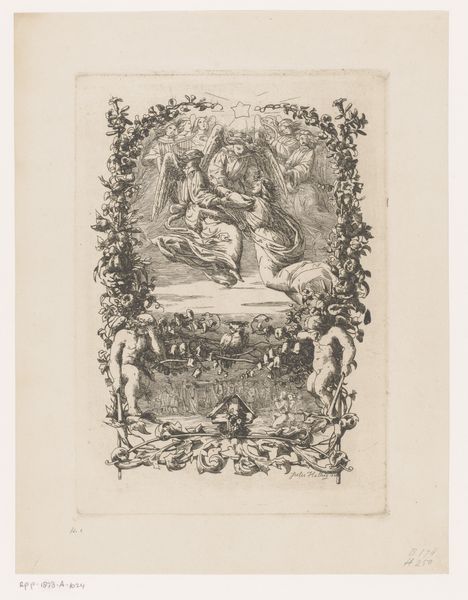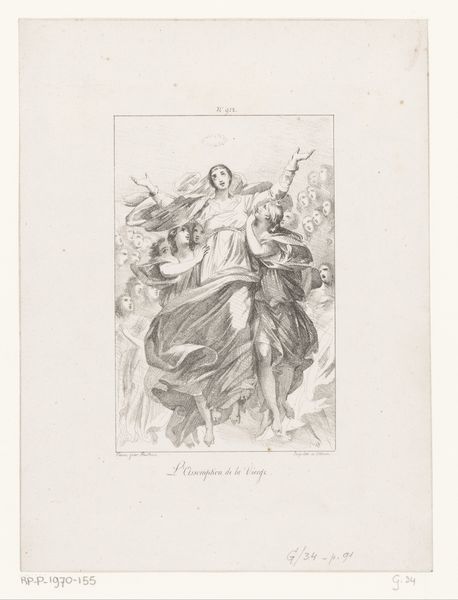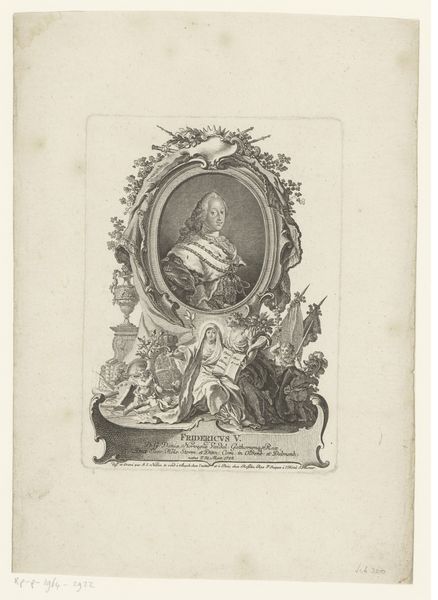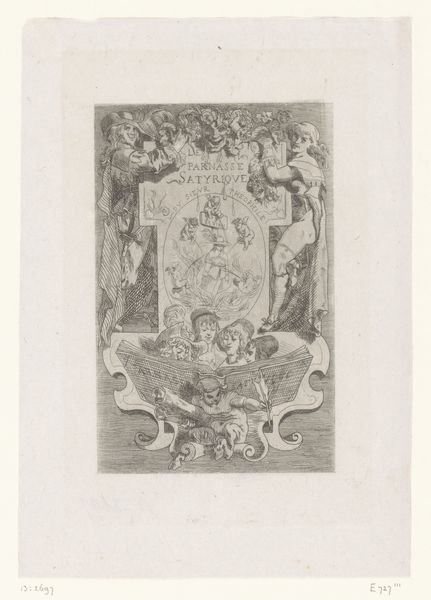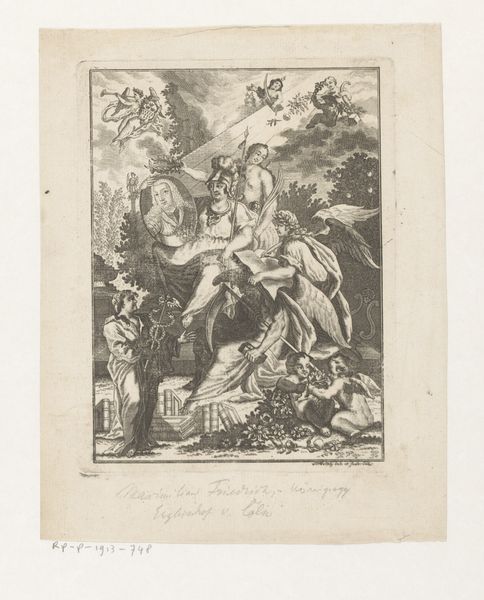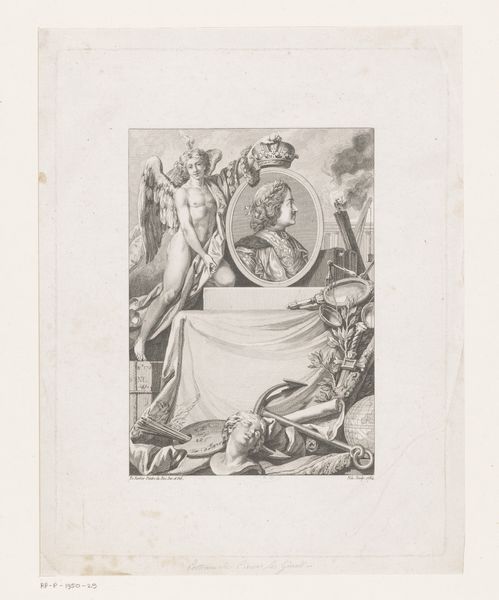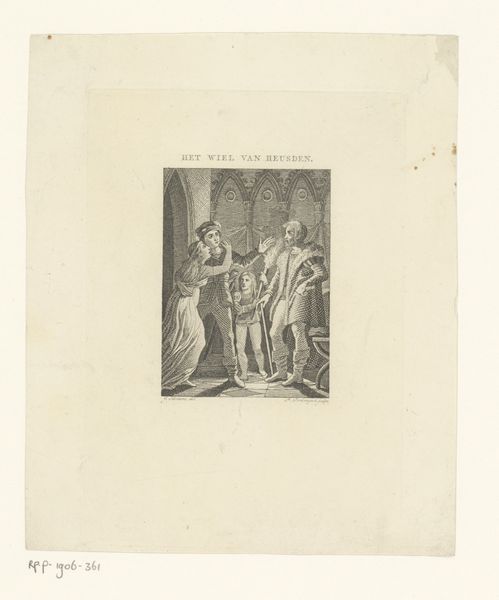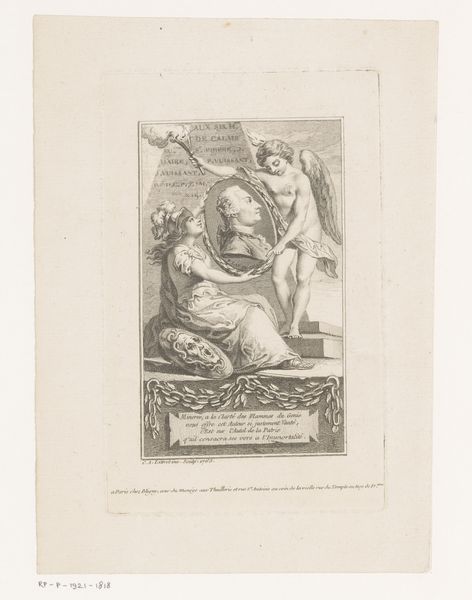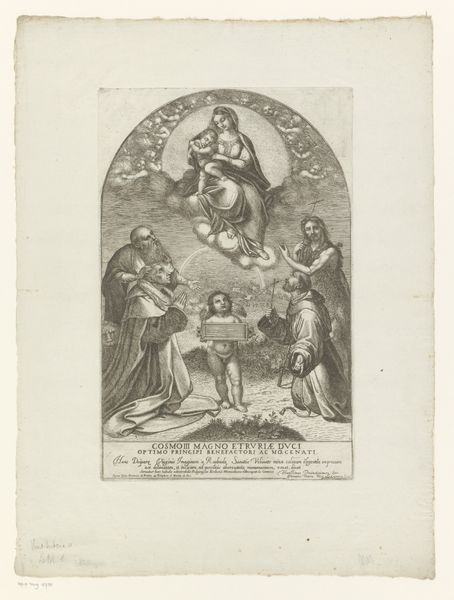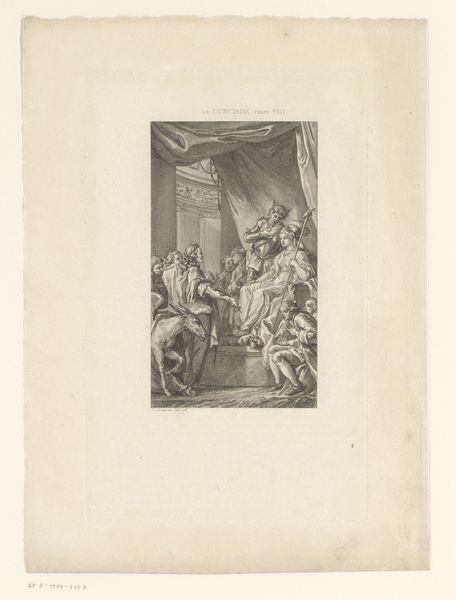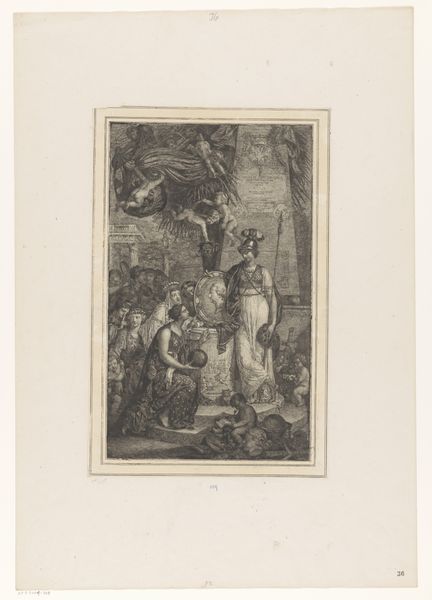
drawing, print, engraving
#
drawing
#
allegory
#
ink paper printed
# print
#
pencil sketch
#
history-painting
#
engraving
Dimensions: height 120 mm, width 83 mm
Copyright: Rijks Museum: Open Domain
Editor: Here we have Caspar Weinrauch's "Minerva bij portretbuste van een man", an engraving from somewhere between 1775 and 1846. It’s quite detailed despite its size, and there’s a distinct sense of formality. What's your read on this piece? Curator: Well, the use of engraving here is interesting. The lines are crisp, which lends itself well to allegorical representations, making them appear more "real" and authoritative, despite their obvious constructedness. This creates a specific type of visual product tied to social performance and its demands on representation. It also invites thinking about its creation within the print market and distribution networks of the era. Consider its potential for mass reproduction and circulation and thus the material and social conditions for creating and consuming it. How does the act of engraving impact the way we receive this allegory of Minerva? Editor: That's a really good point about mass production; engravings were, in some sense, an early form of democratized art. And I didn't consider the effect of line precision on authority, even if the image is of a made-up scene. Curator: Exactly. Think about the socio-economic factors tied to printmaking at the time. Who controlled the workshops? Who consumed these images and how might their lives intersect with, say, the social class standing of the depicted figures. Consider also how the specific skills related to engraving as labor have historically been valued. It seems we cannot merely judge images by aesthetics alone. Editor: So, looking beyond the surface, it's also about considering the hands that made it and the hands that held it. The value of the labor and who controls that value, versus simply whether it looks "good". I’ll definitely carry this perspective forward. Thanks! Curator: Precisely. Examining art through its materiality provides insight beyond surface-level interpretation. It’s important to ask, what materials are used, why were those materials selected, and who had access to them? All elements lead to meaning-making.
Comments
No comments
Be the first to comment and join the conversation on the ultimate creative platform.
